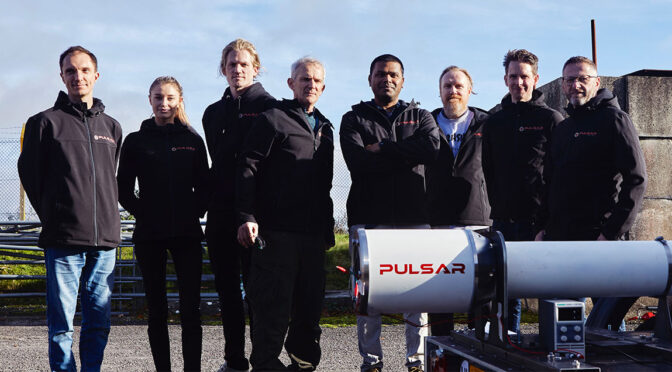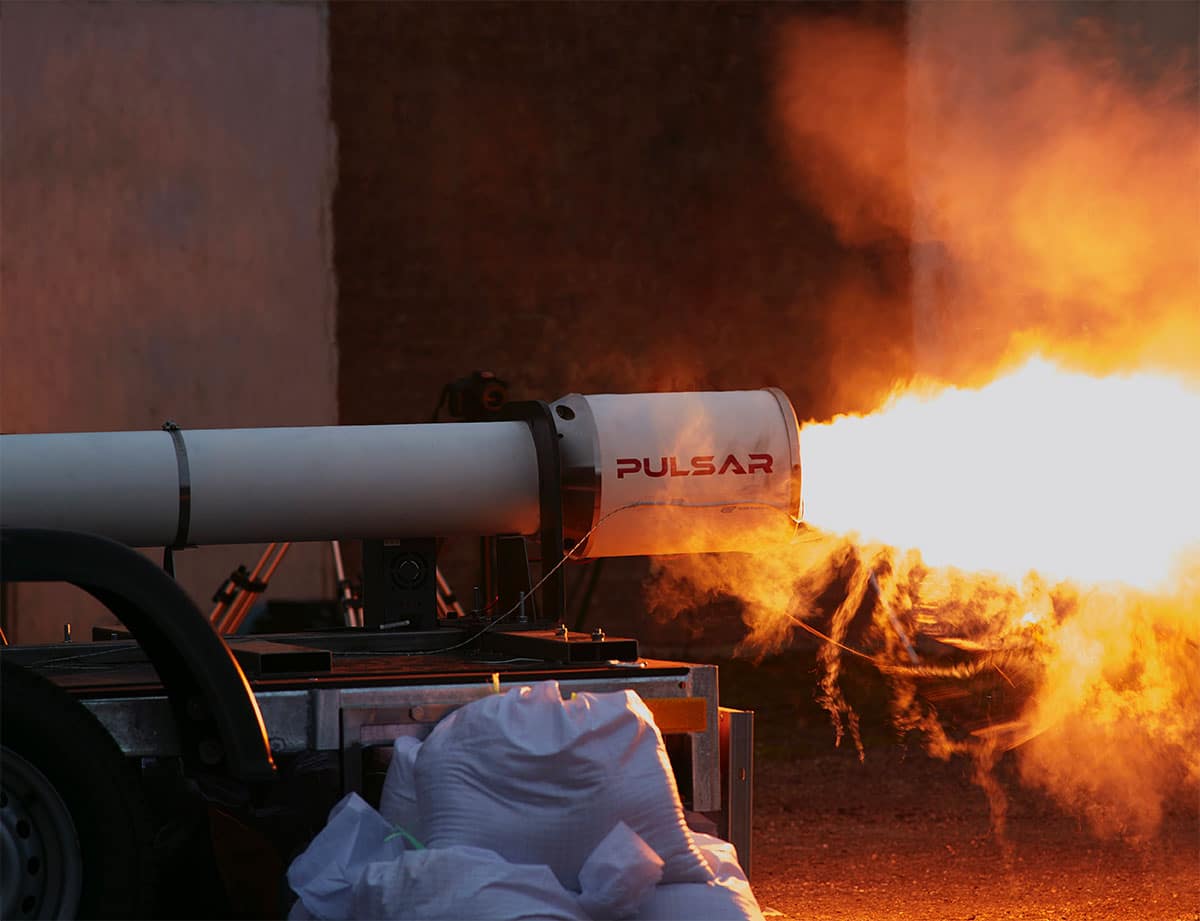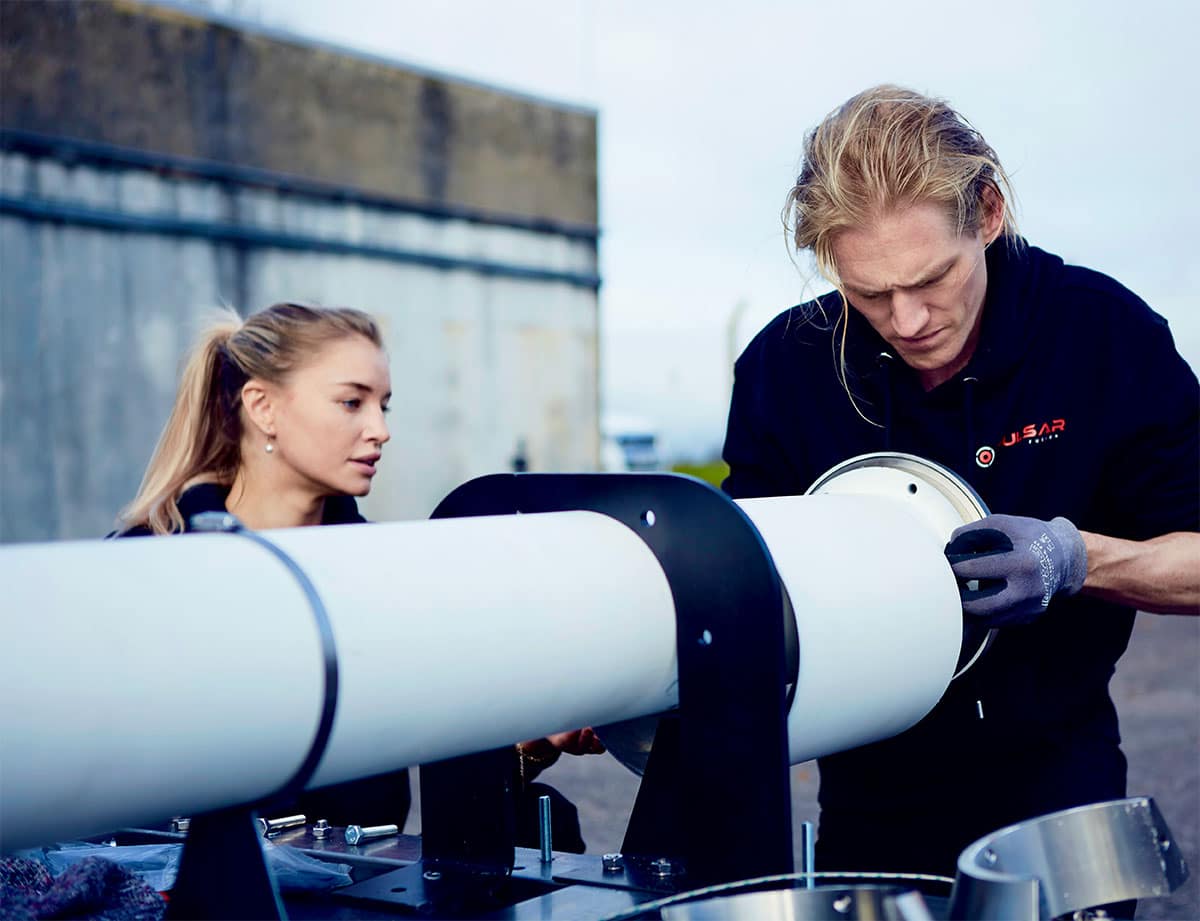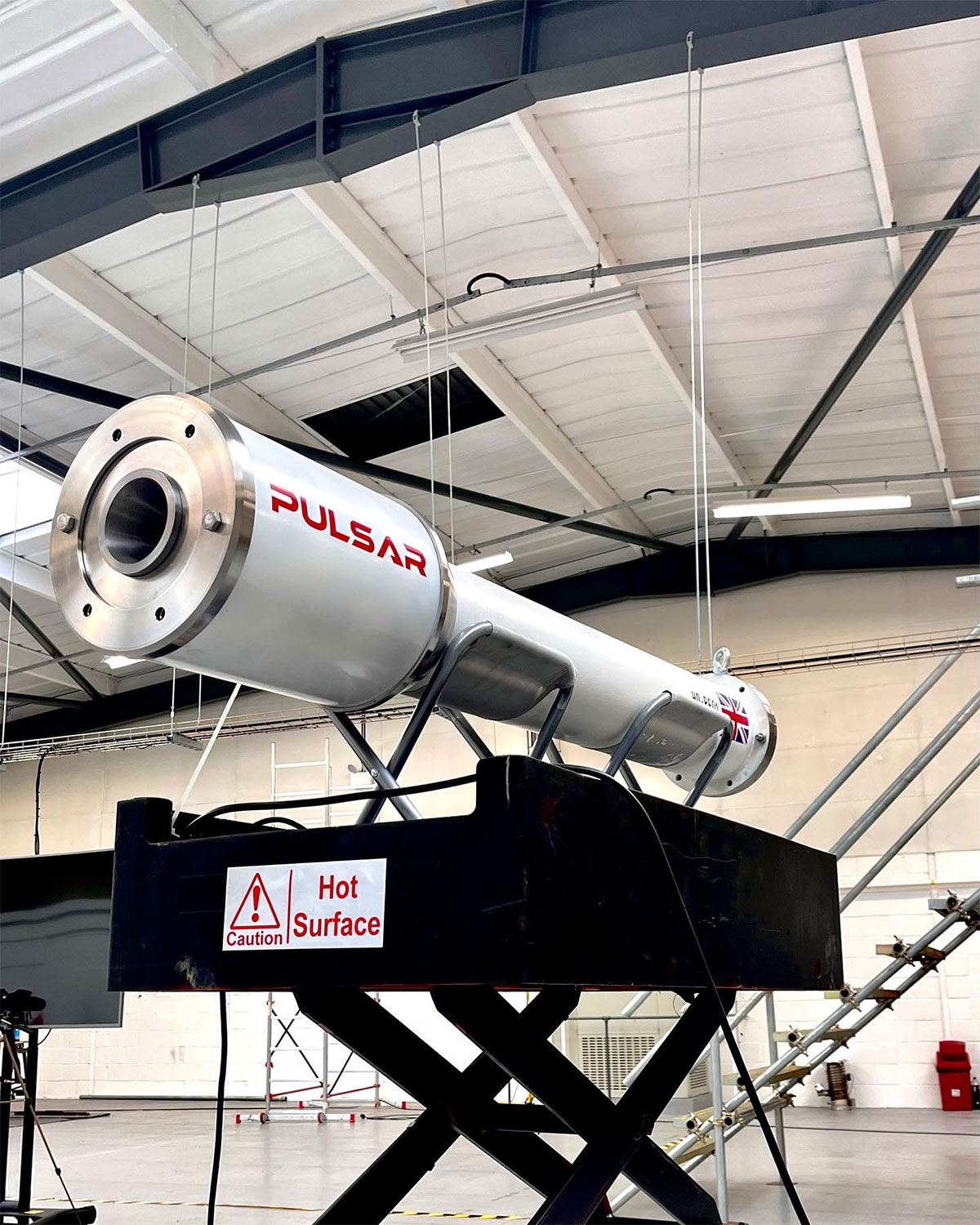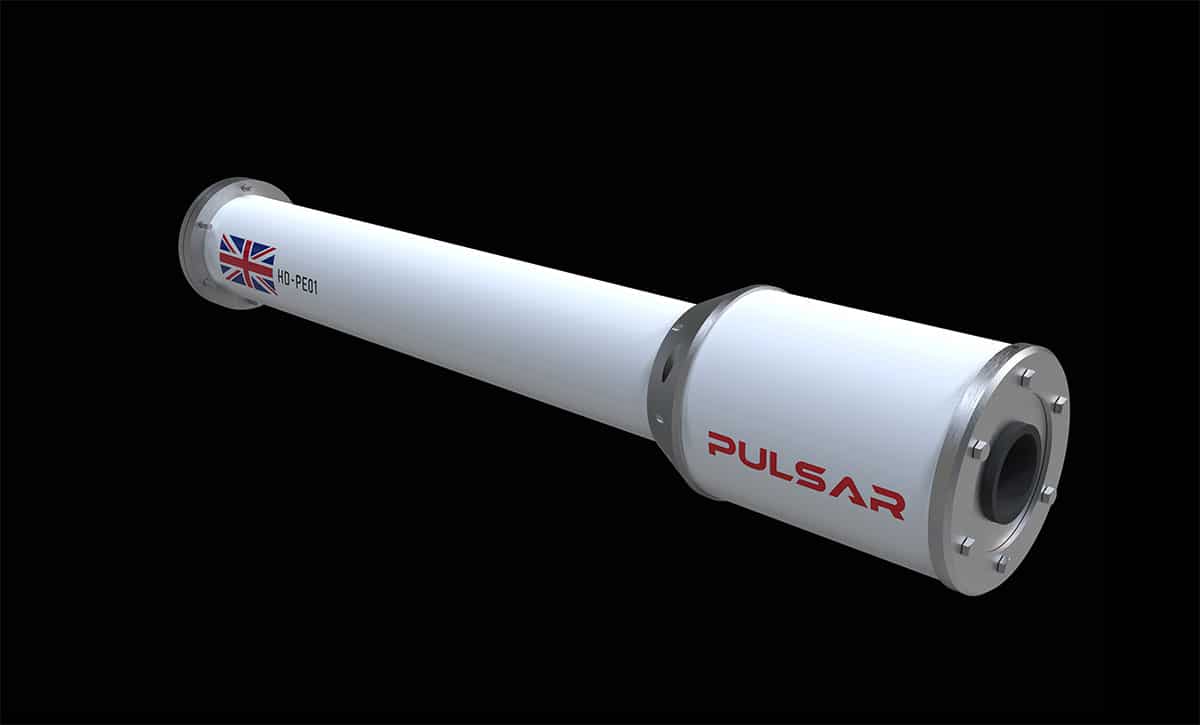On Saturday 26 November, In the sleepy mountain town of Gstaad – Switzerland, British company Pulsar Fusion demonstrated its latest green hybrid rocket engine.
An impressive visual plume effect of supersonic shock diamonds, typical of a high-temperature high mass flow rate rocket exhaust, could be seen through the snowstorm as the team operated the engine in quickly changing conditions. The exhaust speeds of the engine were recorded at Mach 7. This engine would be capable of launching a small rocket to an altitude of several 10s of km, well above UK airspace, or powering the upper stage of a rocket with a larger booster stage into orbit.

CEO, Richard Dinan commented: “British companies with space ambitions must be international and fast-moving, achieving technological milestones on time and on budget whilst being environmentally conscious. Pulsar’s objective is to build world-class technologies that serve as a force for good.
Pulsar’s green (non-toxic) hybrid rocket engine combusts nitrous oxide (N2O) oxidiser and high-density polyethylene (HDPE) fuel and oxygen. The HDPE can be obtained from recycled plastic and the two fuels burn together to produce a non-toxic plume.
The propellants used – nitrous oxide N2O and polyethylene HDPE – are some of the cleanest available to the space industry, producing an exhaust of largely water vapour and having an extremely low production energy requirement, resulting in one of the lowest carbon footprints in the world for an engine of this size.
It is a new model that enables Pulsar to manufacture these compact rocket engines at record lead times, with an enhanced safety factor as due to the design, these engines have relatively benign failure modes in comparison with conventional liquid propulsion engines.
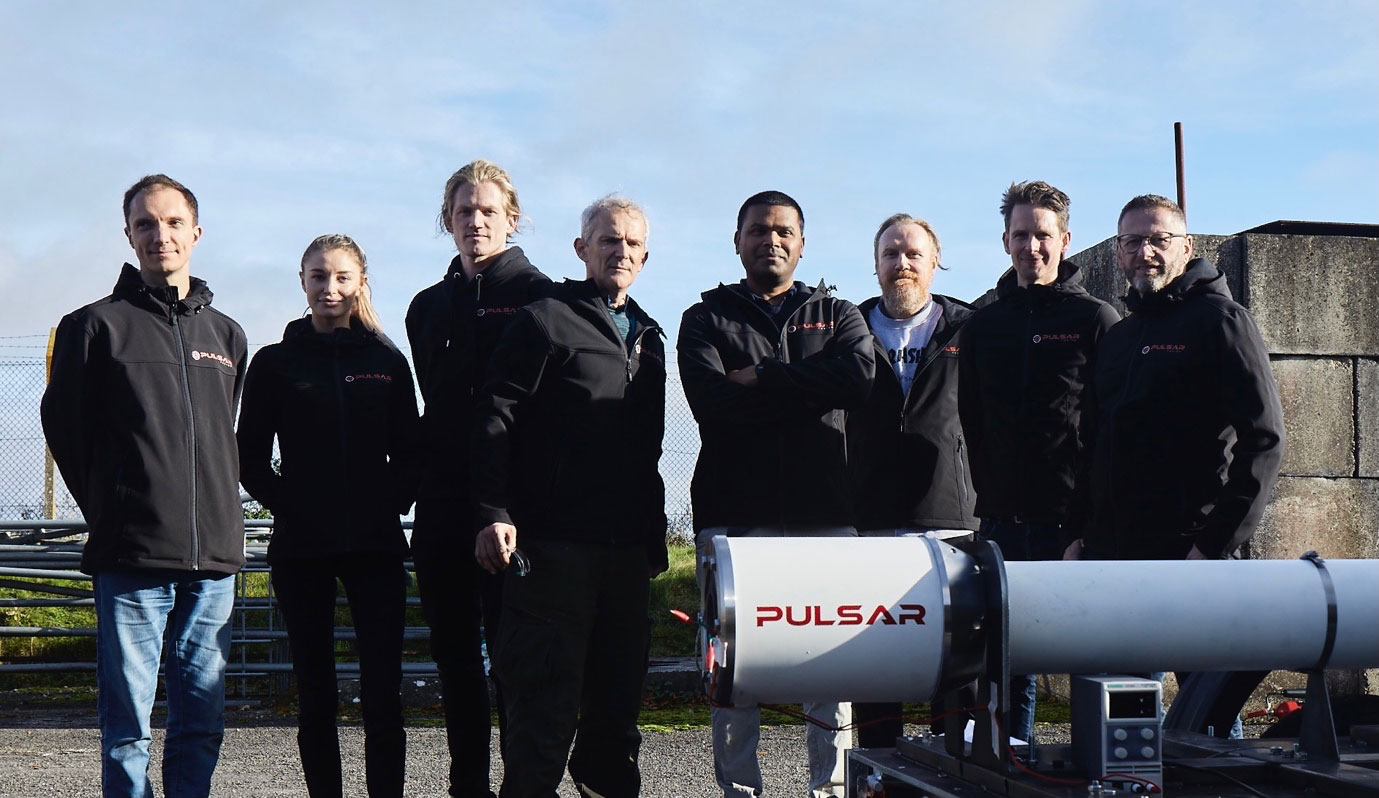
WHAT DOES PULSAR FUSION DO?
Pulsar Fusion is primarily engaged in the research of high-speed propulsion and clean energy applications from nuclear fusion.
Pulsar Fusion received UK government funding in September 2021 to further develop its HET (Hall Effect Thruster) plasma satellite engines, capable of 20 km / second particle exhaust speeds. These Pulsar thrusters have recently been tested at Harwell’s facilities where they withstood 20g’s of vibration, simulating a rocket launch. Pulsar now seeks to IOD test these engines. (In-Orbit Demonstration).
The company’s ultimate milestone is to produce a hyper-speed propulsion engine using nuclear fusion technologies of which it has been researching for nine years which could eventually be used for interplanetary travel – and which scientists say could halve the journey time from Earth to Mars. A first prototype is expected in 2025.
HOW WAS THIS TEST DIFFERENT TO THE PULSAR UK TESTS?
The test in Gstaad ran the engine on liquid oxidiser, compared to only gas in the UK. The oxidiser quantity and engine impulse were increased by a factor of nearly 10, and the chamber pressure raised from around 5 bar to over 20 bar on the first Swiss test to nearly 50 bar on the 2nd one. Pulsar supercharged the flow with nitrogen pressurant which has not been done in the UK before and in doing so raised the thrust to near the design value of 12kN or just over a tonne of thrust.
WHY DEMONSTRATE IN SWITZERLAND?
The demonstration took place on the Gstaad Runway, an idyllic spot surrounded by mountains. Pulsar sees Switzerland as a country that is well placed to support advanced, environmentally friendly space technologies. The company strives to be a British company that can demonstrate its technologies to international clients and Switzerland is an ideal gateway for such an ambition. Pulsar hopes to carry out further tests in the region in 2022 and invite European space clients to attend. Additionally, Pulsar is in contact with most of the UK launch sites and would probably start with further static tests and low altitude flights at Machrihanish, near Cambletown on Argyll before moving to one of the other sites such as Space Hub Sutherland on the mainland or Spaceport-1 on the Hebrides for high altitude flights towards and beyond the Karman line at 100km.


